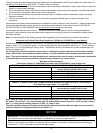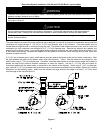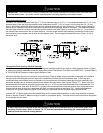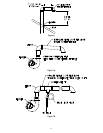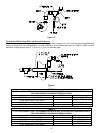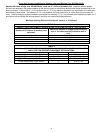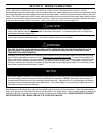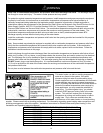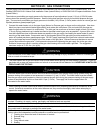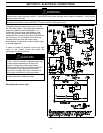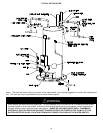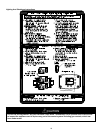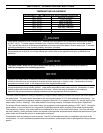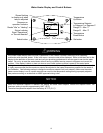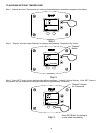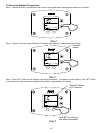
22
SECTION VII: GAS CONNECTIONS
The gas supply lines must meet all requirements of the National Fuel Gas Code (ANSI Z223.1-Latest Edition), or in
Canada CAN/CGA B149.1 Natural Gas Installation Code (Latest Edition) or CAN/CGA B149.2 Propane Installation Code
(Latest Edition).
The minimum permissible gas supply pressure for the purpose of input adjustment is one (1.0) inch (0.25 kPa) water
column above the operating manifold pressure. See the rating plate and gas valve for the manifold pressure and gas
type. The maximum permissible gas supply pressure is fourteen (14.0) inches (3.5 kPa) water column for natural gas and
liquefied petroleum gases/propane gas.
1. Connect this water heater only to the type of gas (Natural or Propane gas) as shown on the rating plate. Use clean
black iron pipe or equivalent material approved by local codes and ordinances. (Dirt and scale from the pipe can
enter the gas valve and cause it to malfunction). The inlet gas line must have a minimum length of three (3) inches
(7.6 cm) drip leg (sediment trap) installed as close to the water heater’s gas valve as possible. A ground joint union
must be installed as close to the water heater as possible in the gas supply line feeding the water heater to permit
servicing of the water heater. Compounds used on the threaded joints of the gas piping must be resistant to the
action of liquefied petroleum gases/propane gas. DO NOT apply pipe dope to the gas valve inlet and make certain
that no pipe dope has become lodged in the inlet screen of the gas valve. Extreme care must be taken to ensure
no pipe dope enters the gas valve. Avoid excessive torque when tightening the gas supply line to the gas valve.
Excessive torque may result in cracking of the gas valve housing and could create a gas leak. The suggested
maximum torque is 31.5 ft. lbs. (4.4 kg-m).
2. This water heater and its gas connection must be leak tested before placing the water heater in operation. Check for
gas leaks with a soap and water solution and a brush or a commercial leak detector fluid. NEVER USE A MATCH OR
OPEN FLAME FOR TESTING!
3. While checking for leaks care must be taken to prevent solution from contacting the electrical connections at the
control. If electrical connections at the control become wet, they must be thoroughly dried before attempting to
operate the water heater.
The manufacturer of this water heater will not be liable for any damage or injury caused as a result of a cracked gas
inlet as a result of excessive torque.
WARNING
The water heater and individual shutoff valve must be disconnected from the gas supply piping system during any
pressure testing of the system at test pressures in excess of 1/2 psi (3.5 kPa). The water heater must be isolated
from the gas supply piping system by closing its manual shutoff valve during any pressure testing of the gas supply
system at test pressures equal to or less than 1/2 psi (3.5 kPa). The supply line must be capped when not
connected to the water heater.
CAUTION
Installation or service of this water heater requires ability equivalent to that of a licensed tradesman in the field
involved. Plumbing, air supply, venting, gas supply and electrical work are required.
Light the unit in accordance with the operating instructions label attached to the water heater.
Under no circumstances should the input rate exceed the input rate shown on the water heater rating plate. Over
firing could result in damage or sooting of the water heater.
If the unit is exposed to the following, do not operate water heater until all corrective steps have been made by a
factory authorized independent service contractor or qualified service professional.
1. Flooding to or above the level of the burner or controls
2. External firing
3. Damage
4. Firing without water
5. Sooting
WARNING



